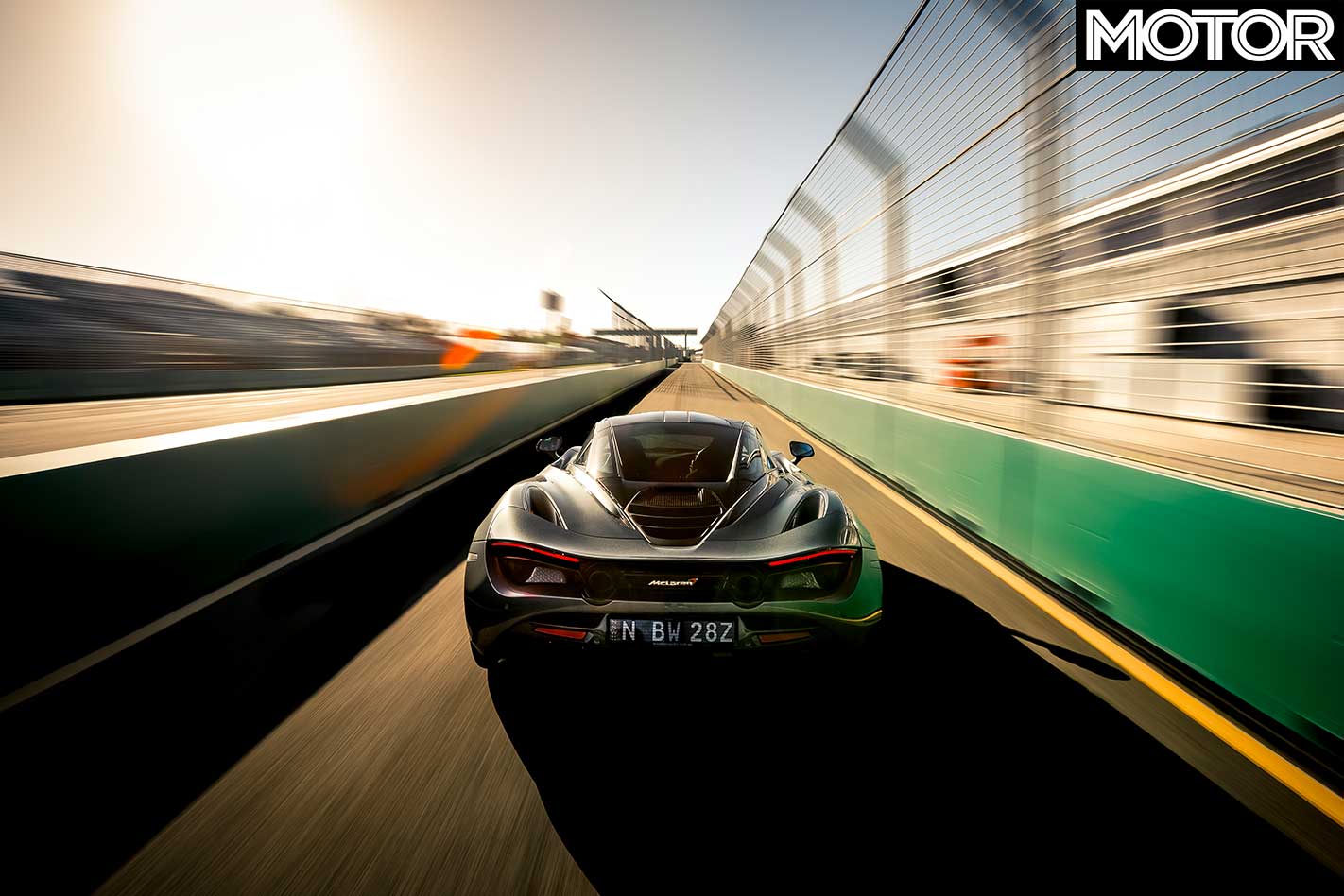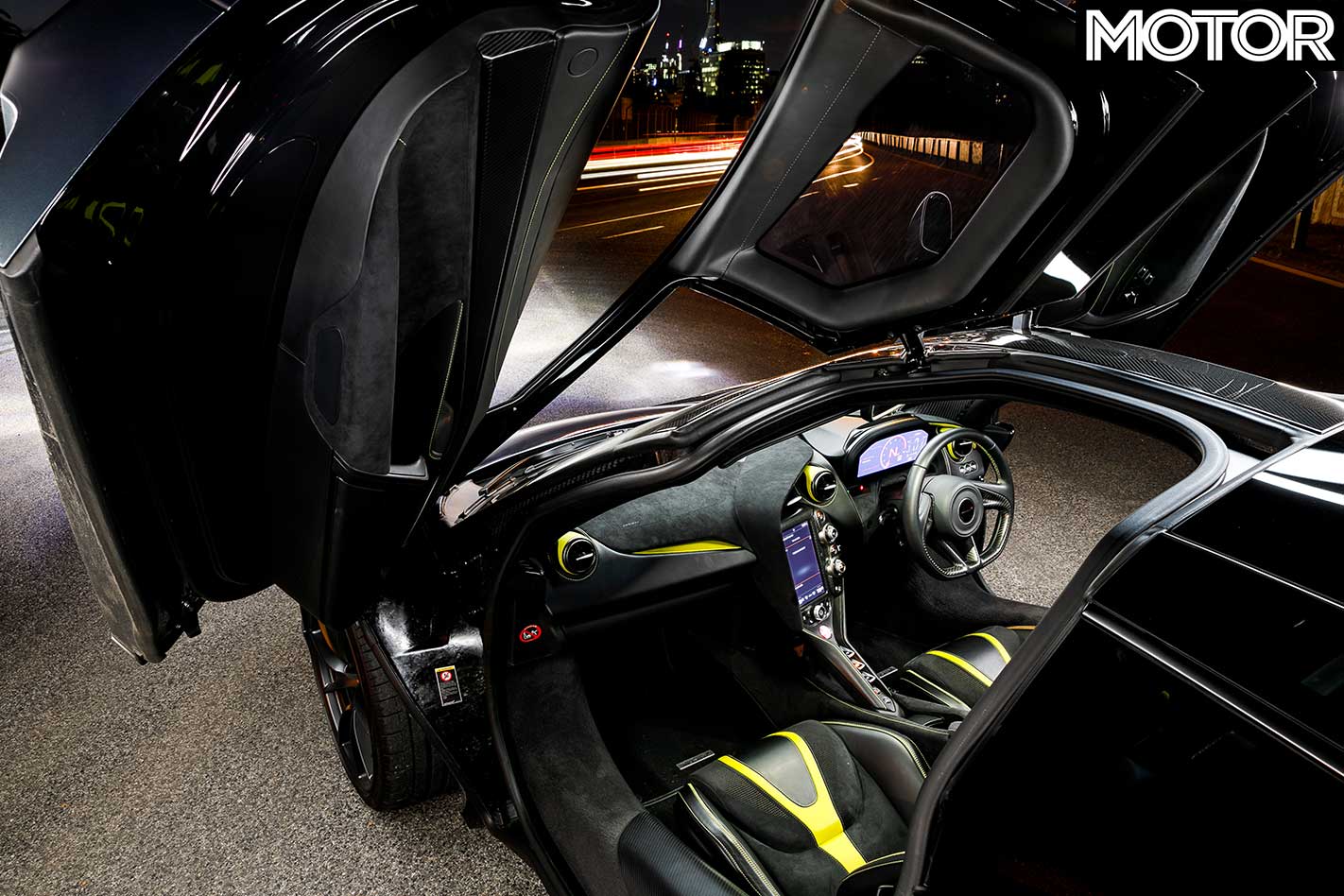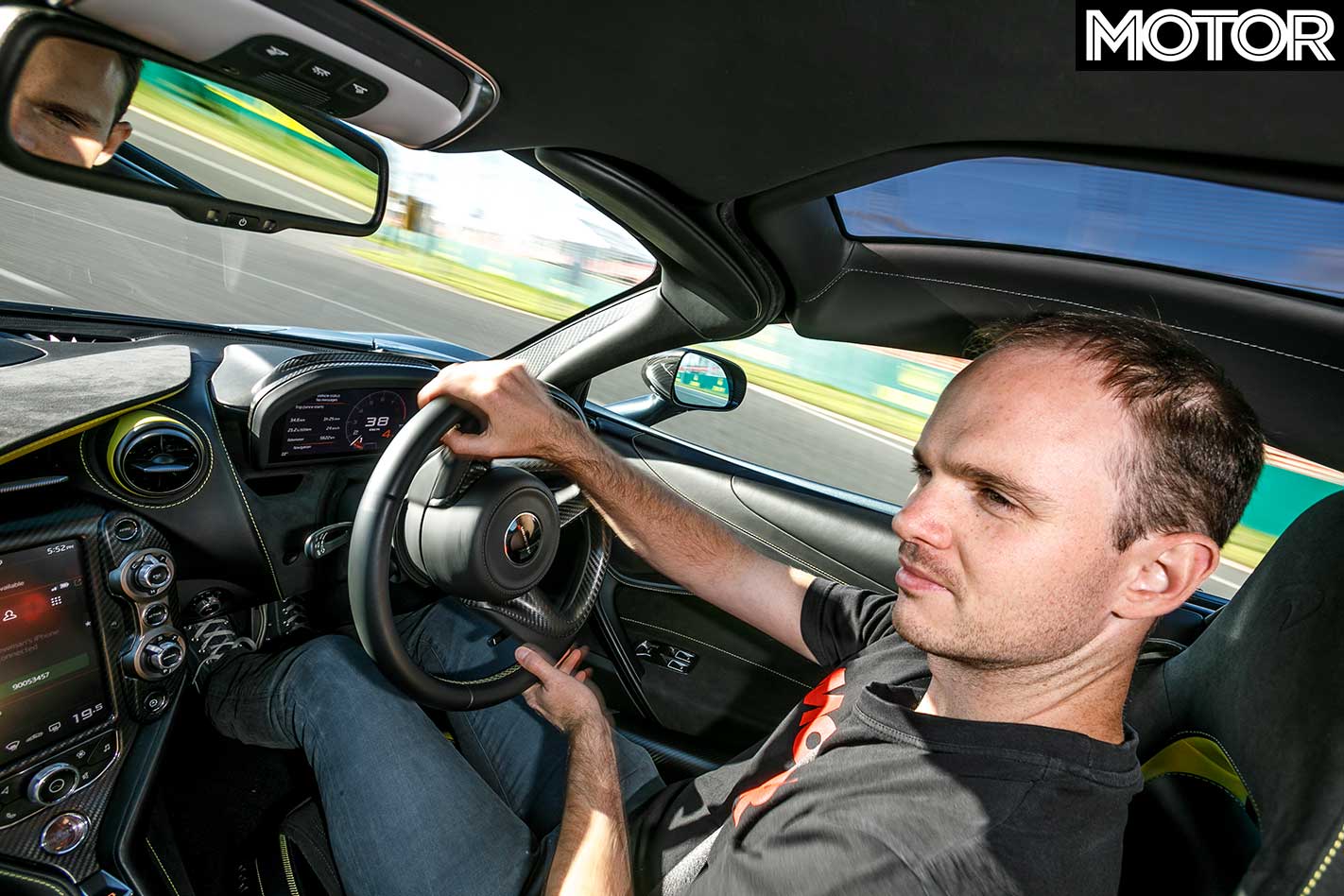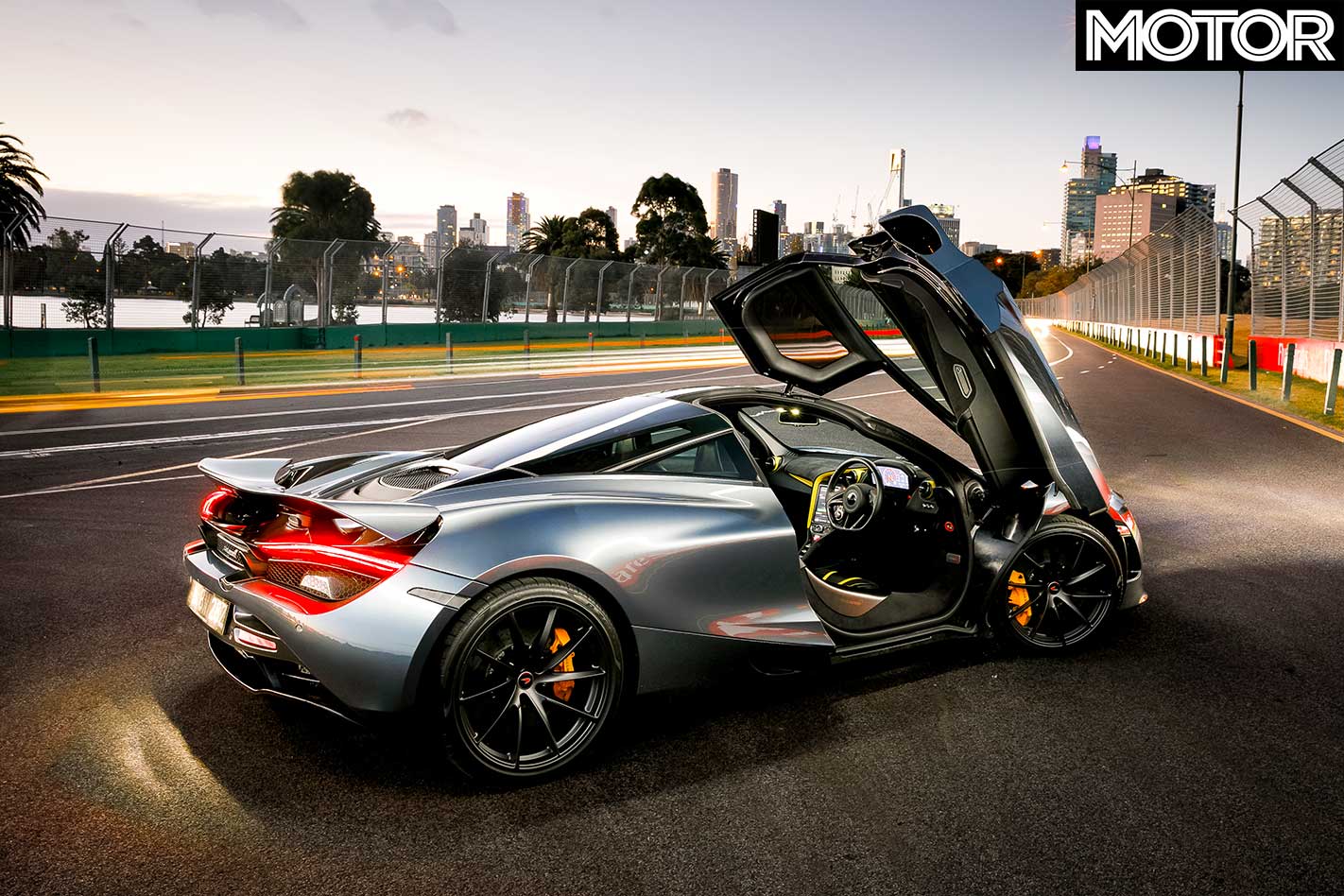The smart money would’ve been on McLaren ahead of this year’s Australian Grand Prix, if past performance was an indicator of future success.
Whenever a year ends in an ‘8’ – the luckiest number of all according to Chinese culture – good things happen to McLaren. We’re not trying to get all new-age and spiritual here, but there’s a spookishly close link between the number and the British race team.

A decade later, the McLaren team scored its first victory when its founder won the 1968 Belgian Grand Prix, while across the Atlantic the team’s domination of Can-Am continued with fellow Kiwi Denny Hulme leading his boss in the championship standings.
McLaren’s most famous season came in 1988. Driving the all-conquering MP4/4, between them Alain Prost and Ayrton Senna secured 15 of the 16 available pole positions, 10 of the 16 fastest laps and 15 of the 16 race wins.
Senna secured his first F1 title by finishing second to Prost in yet another McLaren 1-2 (one of 10 that year) at the season-ending Australian Grand Prix.

Ten years on, McLaren would celebrate another Aussie 1-2 when Flying Finn Mika Hakkinen led home David Coulthard on his way to the first of his back-to-back titles. Fast forward another decade and Lewis Hamilton won the season-opening Australian Grand Prix, the first step towards securing his debut title, McLaren’s most recent.
Today we’re at the venue of Hakkinen and Hamilton’s triumph, where Albert Park has undergone its annual transformation from quiet lakeside retreat to fully fledged race track, providing the unique opportunity to get our first local taste of McLaren’s latest supercar, the 720S, on an almost fully-formed F1 circuit.
Teams of workers are putting the finishing touches on barriers, gravel traps and grandstands, the 720S not helping productivity by causing jaws to swivel and tools to be abandoned thanks to its unusual, streamlined styling.

Its bold design is testament to McLaren’s rapid ascension into the supercar elite. When Hamilton took the chequered flag in his MP4-23 in 2008, McLaren’s first series production supercar had only just begun development, its styling a mere glint in designer Frank Stephenson’s eye.
The MP4-12C (the MP4 bit would later be dropped) debuted in 2011, then-McLaren boss Ron Dennis famously declaring: “We can prove scientifically that ours is the best sports car in history.”
Not everyone agreed with his assessment, some media finding the car high on tech but low on drama, while early cars were also plagued with such a litany of quality problems that Dennis wrote a letter of apology to customers.
However, as you’d expect from a company with its foundations in Formula 1, McLaren learned quickly. The 12C became the 650S, which morphed into the berserk, hardcore 675LT; the P1 hypercar helped prove hybrid was not a dirty word and the ‘entry-level’ Sports Series models (540C/570S/570GT) made a McLaren (slightly) more attainable.

It may have struggled on-track in recent times, but in just six years McLaren has transitioned from a bullish newcomer to an established (and profitable) rival to more established brands like Ferrari, Porsche and Lamborghini.
Enough history, let’s make a closer examination of Woking’s latest wedge. Only a confident company could release a car that departs so radically from accepted styling norms.
The design is an exercise in airflow management; by using ducts in the bottom of the doors McLaren has eradicated the need for a traditional side intake, giving the 720S a somewhat aquatic look, like a twin-turbo sardine.

Even more polarising are its deeply recessed ‘eye sockets’, which feed air to the low temperature radiators. The grey paintwork lessens the contrast – on brighter hues the juxtaposition can be jarring – but the unusual design elements, if anything, only enhance its ability to turn heads. Even in this sombre spec, the 720S attracts smartphone paparazzi like few cars I’ve driven.
McLaren’s racing heritage is obvious inside, not so much in the acres of Alcantara and exposed carbon, but in the driving position.
Though widely adjustable, the most natural position feels to be slightly reclined with your legs almost straight out in front of you, like you’re sitting in an endurance racer. The pedal layout makes left-foot braking almost a necessity and the steering wheel is thin-rimmed and unadorned – nothing is supposed to distract you from the act of driving.
Getting in any supercar is never the most elegant of manoeuvres, but the 720S’s revised ‘Monocage II’ carbon monocoque has narrowed the sills and widened the door apertures, the doors themselves cutting into the roof GT40-style to reduce the chance of bashed heads.

Monocage II has allowed McLaren to narrow the structural elements of the roof and replace bodywork with glass, flooding the interior with light. Vision is remarkable for a car of this type, the transparent C-pillars removing the enormous over-the-shoulder blind spots inherent in most mid-engined supercars.
A few ergonomic quirks remain – the electric seat controls are hidden and confusing in their operation – but strides have been made: the IRIS infotainment system is easy enough to navigate and the frequently-used nose-lift function is no longer buried in a sub-menu.
Arguably the most remarkable thing about this new-generation of supercars is how unremarkable they are to drive slowly. The 720S has substantially more power than the MP4/4 that dominated the 1988 F1 season, but thanks to 30 years of powertrain development it’s an absolute pussycat to pilot normally.

There’s always a degree of nervousness when driving something with a near-$700,000 price tag, but the McLaren’s impeccable manners soon dry those sweaty palms.
Supercars haven’t really been daunting to drive daily for a decade or more – a 488, Huracan or 911 Turbo are all equally meek when driven sensibly – but the 720S does lift the bar for useability courtesy of its excellent vision, slick dual-clutch gearbox and remarkable ride quality.
No, contrary to some testers’ opinions, it doesn’t ride like an S-Class – there’s inevitably a degree of firmness in a car this focused – but in Comfort mode Proactive Chassis Control, now in its second-generation, delivers an unusual level of compliance.

By hydraulically-interlinking the dampers to control roll stiffness, McLaren removes the need for anti-roll bars, which in turn allows each wheel to react to bumps independently. A slight dead spot at the top of the brake pedal is the only blemish on its day-to-day scorecard.
Flick the chassis to Sport and the damping stiffens yet the 720S retains its uncanny acceptance of bumps, like it’s being cradled by a pair of giant hands. McLaren is one of very few manufacturers to persist with hydraulically-assisted steering and from the first turn of the wheel it feels utterly natural.
On smooth roads it’s virtually perfect in its purity: the assistance is beautifully judged and at 2.5 turns lock-to-lock the linear-rate rack never leaves you in any doubt as to the input required for any given corner.

There are virtually no bumps at Albert Park, F1 doesn’t allow them, but then again with a maximum speed limit of 50km/h it isn’t the place to properly road test a 530kW supercar. Thankfully, a couple of hundred kilometres on some of Victoria’s best roads provided plenty of insight into the McLaren’s personality, if only a glimpse into its ultimate ability.
Selecting Sport allows the relaxation of the ESP – crucial as when fully on it flashes with the regularity of a Fernando Alonso radio rant – which in turn allows the activation of Variable Drift Control.
Discovering just how well it controls your drifts would require a track and preferably plenty of space, but with the allowed drift angle set to maximum it essentially works like a beautifully lenient ‘Sports ESP’ setting.

Our test 720S wears regular Pirelli P Zeros rather than the optional Corsas but care is needed on cold rubber for the wheels spin freely when the boost arrives in the lower gears.
Once warm, the grip and traction generated is nothing short of staggering given the amount of power being sent through just two driven wheels. Approaching the limits of the 720S is no easy feat as it corners like it’s on rails at speeds that would have regular sports cars howling in protest.
Dig deep and you’ll discover a chassis of rare talent. Understeer only ever really occurs when you’ve made a mistake and been impossibly ambitious with your entry speed, yet lifting from the throttle to correct it doesn’t result in any evil mid-engined behaviour.

On one occasion I carry the correct amount of brake pressure to the apex by pure fluke and the rear-end pivots perfectly to point the nose directly towards corner exit. It’s an indication there’s a depth to the 720S chassis available to those with the skill to access it, though such explorations are best left to the track.
Impressive as it is, there are chinks in the 720S’s armour. As with its approach to suspension, McLaren treads its own path when it comes to increasing traction, using its Brake Steer technology to distribute power between the rear wheels in place of a traditional limited-slip differential.
In almost every circumstance it works flawlessly, but an inside rear wheel can occasionally spin when unloaded. Of bigger concern is the persistent kickback through the steering over mid-corner bumps, which can be severe enough to knock the front end from your chosen line.

I mention this to a chassis engineer friend who hypothesises McLaren has used a low friction steering gear, which typically results in fluid, communicative steering at the expense of bump sensitivity.
Increase the steering gear friction and you’ll filter out the kickback but steering effort will also increase. McLaren has clearly decided the occasional fight with the wheel is a price worth paying and it’s difficult to fault its decision, but on a bumpy road at speed it does sap confidence. Nonetheless, for a car that’s so fast to be so exploitable is a credit to McLaren’s engineers.
Ah, speed. You might wonder why it’s taken this long to mention the 720S’s engine, surely the heart of any supercar. Truth be told, it’s a struggle to find the right words to describe the sheer quantity of performance; this is a car with roughly the same power-to-weight ratio as a Bugatti Veyron but without the burden of shifting 1990kg.

The performance claims tell some of the story: 0-100km/h in a traction-limited 2.9sec, 0-200km/h in 7.8sec and 341km/h flat-out. Our schedule and McLaren’s insurance prohibits performance testing, however UK magazine Autocar recorded a 10.4sec quarter mile at 231km/h, a terminal speed that would require a parachute at Aussie drag strips.
The 720S retains the same basic twin-turbo flat-plane V8 architecture as its 650S predecessor, but McLaren claims 41 per cent of the parts are new. A 3.6mm stroke increase boosts capacity from 3799cc to 3993cc, yet with a 93.0 x 73.5mm bore/stroke ratio it remains heavily oversquare. This is crucial in achieving the dizzying 8200rpm rev ceiling, with fat lashings of turbo boost left to fill out the mid-range.

Ironically, for all of the high-technology it’s installed into the chassis, McLaren’s approach to turbocharging is resolutely old-school. There are no Ferrari-style staggered torque maps here; the 720S celebrates its forced induction with lag significant enough to force a change in driving style – it’s no F40, but the compression ratio is just 8.7:1 – and the M840T V8 produces the full gamut of turbocharged noises.
Under light throttle openings it mostly emits a tuneless buzz, weirdly sounding most like a boosted flat-six with hints of highly-tuned four-cylinder. Flatten the throttle and a hiss builds menacingly behind your head as the turbos spool, an audible warning you’re about to be a long way down the road in very short order. The initial torque hit is alarming, but the undiminished ferocity with which power continues to build all the way to the cutout is truly terrifying.

Familiarity lessens the shock but the intensity of the acceleration never fades, the world blurring like you’ve hit the hyperspace button on the Millenium Falcon. Thankfully, the enormous carbon-ceramic brakes offer stupendous power and feel once you push beyond that initial dead-zone, remaining utterly unfazed even with smoke wisping out of the calipers.
Attached to this powerhouse is one of the world’s finest gearboxes, the seven-speed dual-clutch offering instant changes – with over 8000rpm to play with not once was a downshift denied – with the perfect amount of mechanical interaction, a slight jolt accompanying full-throttle upshifts without resorting to the wince-inducing brutality of some rival ’boxes. To drive a 720S quickly is to be left breathless, a fizzing, fleshy sack of adrenaline.

Despite this, I’m struggling to really bond with it. Its excellence is unquestionable, but my reservations are not so much mechanical as philosophical. The speed is thrilling, but there’s one thought I can’t stop it burrowing its way into my head: “I think this car would be more enjoyable if it had 150kW less and sounded better.”
The performance of the 720S is such that even if the law allowed it, exploiting its full potential on the public road would be borderline irresponsible, yet on a track you’d have to be a driver of some talent to go materially faster in it than something like a 570S.
Of course you don’t have to drive it flat-out all the time, but whereas something like a Huracan or a 911 GT3 rewards you with rich music regardless of road speed, the McLaren offers only a slightly anodyne hum.

Furthermore, 530kW requires a lot of fuel and large parts of our 180km road loop had to be spent cruising lest we run out of juice. Despite a tank more than three-quarters full, a 15-minute spell of enthusiastic driving had the trip computer displaying just 45km to empty.
Of course, there’s no way McLaren could offer a car – particularly a Super Series model – that offered less performance than its predecessor, and for many buyers its speed will be important for the same reason they wear a watch that’s waterproof to 10,000m – that the ultimate performance exists is more important than actually using it. After all, that the 720S is superior to, say, the 570S, is inarguable, but its superiority primarily sits in a stratosphere that is rarely accessible.
Having been lucky enough to drive both, I’m not sure I actually enjoyed the 720S any more than its ‘little’ brother (the 570S is actually the slightly larger car).

This shouldn’t detract from the brilliance of the 720S: it’s useable and comfortable, yet possesses a level of performance that would surely be impossible to tire of. In many ways it’s the supercar benchmark; it’s certainly the quickest and most comfortable car in its class, yet struggles to deliver the same slow-speed theatre as some of its slower rivals.
That said, noise is subjective, and if you enjoy the McLaren’s industrial orchestra of whirrs, hisses and hums then the 720S is almost without fault.
Despite its revival in fortunes, McLaren’s F1 team looks unlikely to extend its run of ‘lucky 8s’, however, projects like the Senna and forthcoming BP23 mean the road-car operation could still make 2018 a landmark year.
Inner Space

1 – IRIS touchscreen designed for the smartphone generation, with everything swipeable or draggable 2 – McLaren understands steering wheels. Thin rim fits your hands perfectly and there are no buttons to knock or distract 3 – Revised monocoque a big step forward, allowing easier entry and exit and aiding vision by allowing slimmer pillars 4 – Are you a real supercar if you don’t have crazy doors? Butterfly doors stop traffic and hidden exterior latch prevents unwanted passengers
The Nemesis
Ferrari 488 GTB 3.9-litre twin- turbo V8, RWD, 492kW/760Nm, 0-100km/h 3.0sec 1475kg, $526,888

The obvious rival. Not as ultimately quick as the McLaren, but throttle response is better, as is the noise (to these ears). Both are so incredible to drive that choosing between them is splitting hairs – pick the one you like.
FAST FACTS 2018 McLaren 720S

BODY: 2-door, 2-seat coupe DRIVE: rear-wheel ENGINE: 3994cc V8, DOHC, 32v, twin-turbo COMPRESSION RATIO: 8.7:1 POWER: 530kW @ 7500rpm TORQUE: 770Nm @ 5500rpm WEIGHT: 1419kg POWER-TO-WEIGHT: 374kW/tonne TRANSMISSION: 7-speed dual-clutch SUSPENSION: double wishbones, hydraulically-linked adaptive dampers L/W/H: 4543/1930/1196mm WHEELBASE: 2670mm TRACKS: 1674/1629mm (f/r) STEERING: hydraulically-assisted rack-and-pinion BRAKES: 390mm ventilated/drilled carbon-ceramic discs, 6-piston calipers (f); 380mm ventilated/drilled carbon-ceramic discs, 4-piston calipers (r) WHEELS: 19.0 x 9.0-inch (f); 20.0 x 11.0-inch (r) TYRES: Pirelli P Zero; 245/35 ZR19 (f); 305/30 ZR20 (r) PRICE: $515,080 ($697,941.50 as-tested)LIKE: Berserk speed; ace handling; ride; vision DISLIKE: Sounds average; steering kickback; price RATING: 4.5 out of 5 stars






